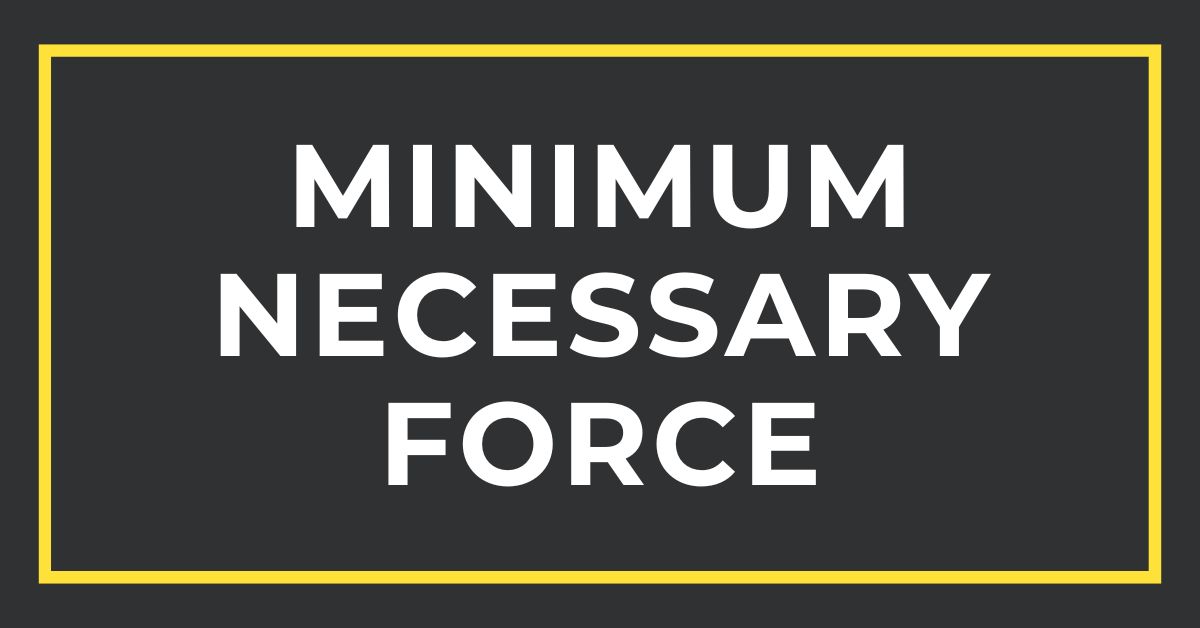Minimum Necessary Force
Table of Contents

There’s an old saying, something about using a sledgehammer to kill a fly. This cliché demonstrates the principle of minimum necessary force. The basic idea is one deeply steeped in Anglo-Saxon law: It’s better to have fewer rules than more and the least force necessary should be used for enforcement.
Examples of Minimum Necessary Force
 One example of minimum necessary force in practice is the English common law tradition of reasonable self-defense. Shooting a man in the head for trying to punch you in the stomach will likely not pass legal muster.
One example of minimum necessary force in practice is the English common law tradition of reasonable self-defense. Shooting a man in the head for trying to punch you in the stomach will likely not pass legal muster.
All rules are force, or the implied threat of force. If there are no consequences for breaking the rules, then there are no rules — only suggestions. So it’s necessary to have a continuum of force with regard to the rules themselves. Some rules carry the ultimate penalty (death), while others carry only social sanction (people avoiding you because you eat like a slob), with much daylight in between.
There is a practical reason to have fewer rules as well: Too many bad laws make otherwise reasonable people disrespect and ignore good laws.
Fewer rules is also a good overall metric of greater social trust. People who trust each other do not require a great deal of red tape to negotiate all of their interactions. Furthermore, more rules mean more social stress. Keeping track of an elaborate system of totems and taboos is exhausting.
Woke Culture and Minimum Necessary Force
Consider the opposite: Wokeness, which is tyrannical for two reasons. First, it violates both principles outlined above: too many rules, too severe consequences. But it is also an ever-shifting goalpost. Today’s woke is tomorrow’s reactionary. Thus, wokeness acts not just as a tyrannical rule system, but a grammar by which the cognizanti signal in-group status.
It is the ultimate ideology for tyrants: A complex and extensive system of taboos that changes from one minute to the next, carrying extreme consequences for transgression, and little or no hope of redemption.
War Quotes: Thoughts About Man’s Failure as a Thinking Animal
"War is not the answer." We've seen this message stuck to the bumper of many a Volkswagen Westfalia. But what this little aphorism begs is a question: what was the…